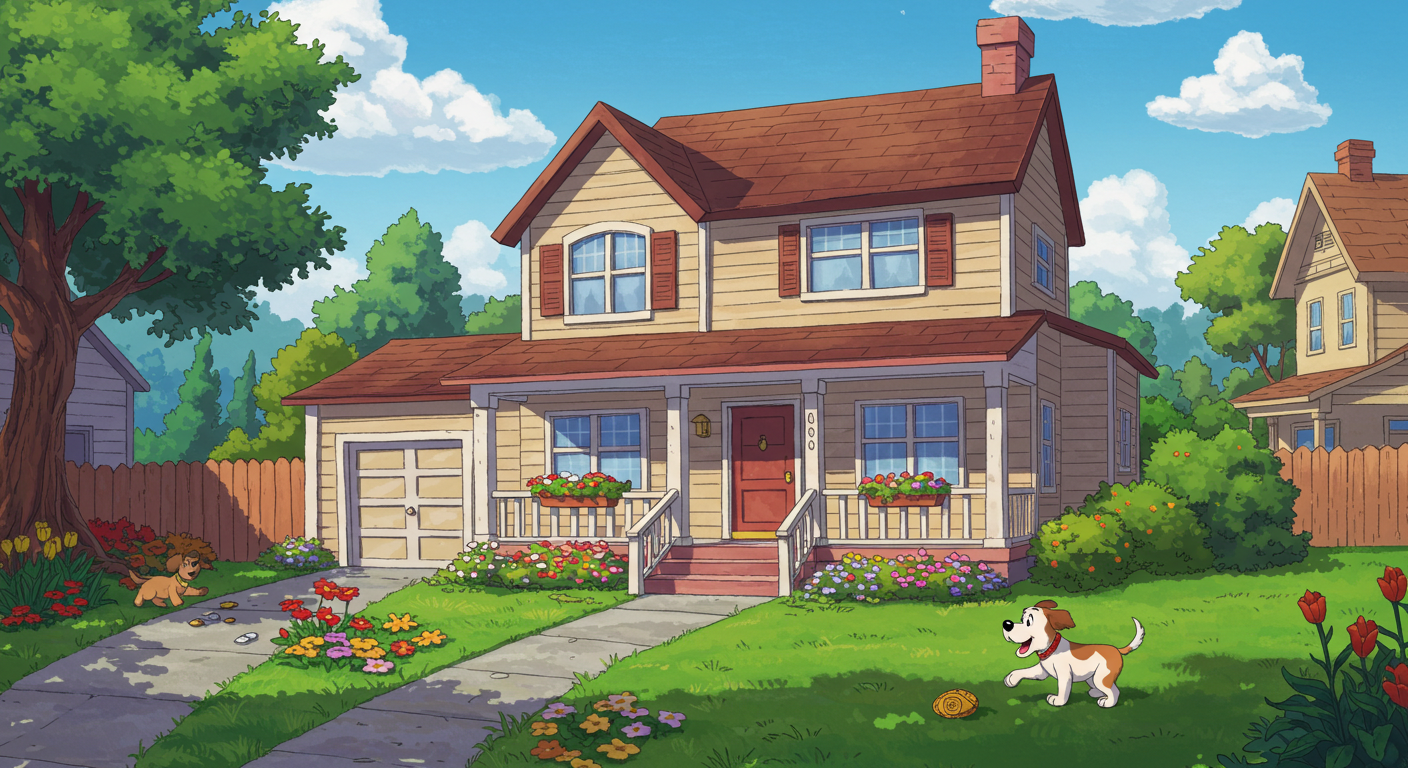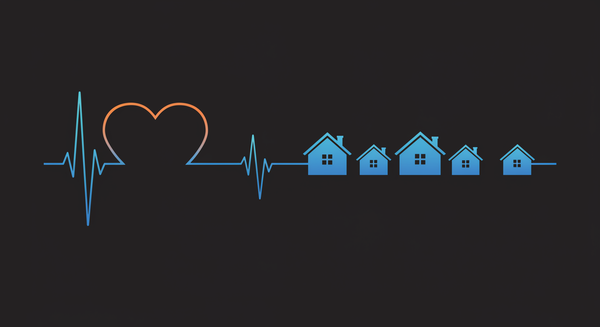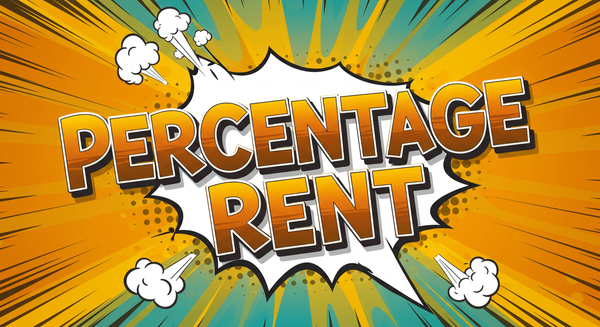Curb Appeal in Property Management: Your Complete Guide to Maximizing Property Value
At the most basic level, curb appeal simply refers to how attractive your property looks from the street – but how it impacts your property value through perception is why curb appeal is important

Did you know that properties with excellent curb appeal can command up to 14% higher values in competitive markets? That's potentially an extra $30,000+ on a $250,000 property—just from making smart exterior improvements. For property managers and landlords, curb appeal isn't just about pretty landscaping. It's a strategic business tool that drives higher rents, reduces vacancy periods, and keeps tenants happy.
Curb appeal refers to how attractive your property looks from the street. It encompasses everything a prospective tenant or buyer sees when they first drive up—from your freshly painted front door to well-maintained landscaping and clean walkways.
You'll learn: In our latest article covering property management terms and definitions, today we cover what curb appeal means in property management, why it directly impacts your bottom line, proven strategies that work, and how to avoid costly mistakes that hurt your property's marketability.
What Is Curb Appeal?
Curb appeal is the visual attractiveness of a property as seen from the street or public areas. The U.S. Department of Housing and Urban Development defines it as "very closely associated with, or an extension of, good property management."
Think of curb appeal as your property's first impression. When potential buyers or tenants drive up, they form opinions within seconds. A well-maintained exterior with good curb appeal suggests the property is cared for. Poor curb appeal—think overgrown weeds, peeling paint, or broken shutters—sends the opposite message.
Curbside appeal and curb appeal mean the same thing. You might also hear terms like:
- Exterior appeal
- Street appeal
- First impression value
Curb appeal includes several key elements:
- Landscaping - grass, shrubs, trees, and flower beds
- Hardscaping - walkways, driveways, and outdoor lighting
- Building exterior - paint, siding, garage door, and shutters
- Details - house numbers, light fixtures, and planters
The concept gained popularity in the 1980s through real estate shows, but smart property managers have always understood that exterior appearance affects property value. Today's market makes curb appeal even more critical as prospective buyers and tenants often drive by properties before scheduling tours.
Why Curb Appeal Matters in Property Management
Missing curb appeal could cost you thousands in lost rental income. Research from the University of Texas shows that good curb appeal can increase property values by 7-14% depending on market conditions. For rental properties, this translates to higher achievable rents and shorter vacancy periods.
The National Association of REALTORS® found that 97% of real estate professionals consider curb appeal important for attracting potential buyers. More importantly for property managers, 75% rate it as "very important."
Here's how curb appeal impacts your operations:
Higher Rental Rates: Properties with poor curb appeal struggle to achieve market-rate rents, even with beautiful interiors. A property with great curb appeal can often command premium rents because tenants perceive higher value.
Faster Leasing: Attractive properties generate more showing requests and lease faster. The King County Housing Authority documented that systematic curb appeal improvements led to higher resident retention and reduced vacancy costs.
Lower Turnover: Tenants in well-maintained properties with good curb appeal tend to renew leases more often. They take pride in where they live and treat the property better.
Reduced Crime: HUD research identifies improved curb appeal as contributing to lower crime rates in residential areas. Well-maintained properties signal active management and community investment.
Virginia Tech research confirms that landscape improvements specifically contribute about 15% to perceived home value. The study found that professional landscape design elements significantly outweighed plant size or type in consumer valuations.
Tenant Satisfaction & Curb Appeal Analysis
Data-Driven Insights for Property Management Excellence
Property Performance Data by Curb Appeal Category
| Curb Appeal Rating | Avg. Renewal Rate | Satisfaction Score | Days to Lease | Rent Premium | Maintenance Calls |
|---|---|---|---|---|---|
| Excellent | 92% | 4.6/5.0 | 18 days | +$127/month | 2.3/year |
| Good | 83% | 4.1/5.0 | 25 days | +$73/month | 4.1/year |
| Fair | 71% | 3.4/5.0 | 38 days | +$21/month | 7.8/year |
| Poor | 58% | 2.8/5.0 | 52 days | -$34/month | 12.6/year |
Key Performance Insights
Real-World Applications of Curb Appeal
Example 1: Budget-Conscious Upgrades That Work
Challenge: A property manager in South Carolina inherited a portfolio of 1970s rental homes with dated exteriors and declining rents.
Solution: Instead of major renovations, they focused on high-impact, low-cost improvements:
- Painted all front doors a fresh, modern color
- Added new house numbers and light fixtures
- Planted colorful annuals in simple planters
- Power-washed all exteriors and walkways
Outcome: Average rents increased 8% within six months, and showing-to-lease conversion improved by 30%.
Takeaway: Small, consistent improvements often deliver better ROI than expensive renovations.
Example 2: Seasonal Curb Appeal Strategy
Challenge: A property management company noticed higher vacancy rates during fall and winter months when landscaping looked dormant.
Solution: They implemented year-round curb appeal maintenance:
- Fall: Added colorful mums and decorative planters
- Winter: Used evergreen shrubs and outdoor lighting for warmth
- Spring: Fresh mulch and early-blooming flowers
- Summer: Regular lawn care with stripe mower patterns for professional appearance
Outcome: Year-round occupancy improved, and tenant satisfaction scores increased significantly.
Takeaway: Curb appeal requires seasonal attention, not just spring cleanup.
Example 3: Technology-Enhanced Curb Appeal
Challenge: A large property management firm needed consistent curb appeal standards across 200+ properties in multiple states.
Solution: They developed a digital inspection system with photo documentation and created property-specific improvement plans. Landscape professionals were contracted for major work, while property teams handled routine maintenance.
Outcome: Properties maintained 92% or higher satisfaction ratings, and the company could demonstrate ROI through data-driven improvement tracking.
Takeaway: Systematic approaches work better than ad-hoc improvements for large portfolios.
Legal + Compliance Considerations
Fair Housing and Curb Appeal
This may sound a bit odd, but property managers need to ensure that curb appeal improvements don't create fair housing violations. Here's what I mean:
- Universal accessibility - ensure walkways and entrances meet ADA requirements
- Consistent standards - apply the same curb appeal criteria across all properties – applying them inconsistently could create impressions of bias, even where no bias was intended
- Religious neutrality - avoid decorations or curb appeal policies that favor specific religions or cultures
HOA and Municipal Requirements
Many areas have specific requirements for:
- Landscaping standards - some HOAs mandate specific grass types or maintenance schedules
- Architectural guidelines - exterior colors, materials, and modifications often need approval
- Setback requirements - landscaping and hardscaping must comply with local zoning
Tenant Responsibility vs. Landlord Duty
Most leases specify landscaping and exterior maintenance responsibilities:
- Landlord typically handles: structural exterior maintenance, major landscaping, outdoor lighting
- Tenant may handle: basic lawn care, seasonal planters, keeping walkways clear
- Gray areas: shrub trimming, weed control, garage door maintenance
Document responsibilities clearly in lease agreements to avoid disputes.
Best Practices for Curb Appeal
1. Start with a Clean Foundation
What it is: Address basic maintenance before adding decorative elements
Why it matters: Fresh paint, clean gutters, and well-maintained walkways provide the foundation for all other improvements. Prospective tenants notice details like peeling paint or dirty exterior surfaces.
How to do it:
- Power wash all exterior surfaces annually
- Keep gutters clean and properly attached
- Repair or replace damaged shutters, trim, and siding
- Ensure garage doors open smoothly and look clean
Tools to use: Create a seasonal maintenance checklist to stay consistent
2. Invest in Professional Landscaping Design
What it is: Strategic plant selection and layout that looks good year-round
Why it matters: Virginia Tech research shows design sophistication matters more than plant size or cost. Well-designed landscaping increases perceived property value by 15%.
How to do it:
- Choose plants native to your region for lower maintenance
- Create layered plantings with different heights and textures
- Use fresh mulch twice yearly for a clean, maintained appearance
- Install automatic irrigation systems for consistent care
Tools to use: Consult with landscape professionals for initial design, then maintain with qualified staff
3. Enhance Lighting for Safety and Appeal
What it is: Strategic outdoor lighting that improves both security and visual appeal
Why it matters: Good lighting makes properties feel safer and more welcoming. It also allows evening showings and improves tenant satisfaction.
How to do it:
- Install LED light fixtures for energy efficiency
- Light pathways, entrances, and key landscape features
- Use warm light colors (2700K-3000K) for welcoming appearance
- Ensure all outdoor lighting stays functional with regular bulb replacement
Tools to use: Timer switches and motion sensors reduce energy costs while maintaining security
4. Create Defined Outdoor Spaces
What it is: Clear boundaries and purposeful use of yard space and outdoor areas
Why it matters: Tenants value usable outdoor space. Well-defined areas feel larger and more valuable than undefined lawn areas.
How to do it:
- Use edging to separate grass from planted areas
- Create seating areas with simple outdoor furniture
- Define parking areas with appropriate materials
- Add container planters for flexible seasonal color
5. Maintain Consistent Standards
What it is: Regular inspections and upkeep schedules across all properties
Why it matters: Curb appeal requires ongoing attention. The USDA requires "good curb appeal on a continuous basis" for their property recognition programs.
How to do it:
- Schedule weekly property inspections
- Create photo documentation for consistent standards
- Budget specific amounts for curb appeal maintenance
- Train staff on what to look for and when to take action
Tools to use: Property management software with photo documentation and maintenance tracking
Related Concepts & Terminology
Property Value: The monetary worth of real estate, which curb appeal directly influences. Better homes with good curb appeal typically appraise higher and sell faster.
Landscaping: The process of making outdoor spaces more attractive through plants, hardscaping, and design. This includes everything from grass maintenance to shrub placement.
Capital Improvements: Property upgrades that increase value and qualify for different tax treatment. Many curb appeal projects qualify as capital improvements that enhance curb appeal.
Tenant Satisfaction: How happy renters are with their living situation. Research shows strong correlation between exterior property appearance and tenant satisfaction and curb appeal.
Cap Rate: A metric measuring property investment returns. Improving cap rates through curb appeal demonstrates how exterior improvements affect overall property performance.
Common Questions
What adds the most curb appeal to a home?
Fresh landscaping delivers the biggest impact for your investment. Virginia Tech research shows that professional landscape design contributes 15% to perceived property value. Focus on these high-impact areas: a well-maintained lawn with defined edges, seasonal flowers in planters near the entrance, fresh mulch in planted areas, and clean, well-lit walkways. These improvements work together to create an immediately noticeable transformation.
What is the most affordable way to increase curb appeal?
Start with cleaning and basic maintenance before spending on new features. Power wash all exterior surfaces, clean or paint the front door, add fresh mulch to existing beds, and plant colorful annuals in simple planters. These improvements typically cost $200-500 per property but deliver immediate visual impact. Many property managers see 8-12% rent increases from these basic improvements alone.
What is the easiest way to increase curb appeal of a home?
Focus on three quick wins: ensure your grass is properly maintained with regular mowing (consider stripe mower patterns for a professional look), keep all walkways and driveways clean and well-lit, and add simple seasonal color through planters or window boxes. These require minimal time investment but create a welcoming first impression that prospective tenants notice immediately.
How much does improving curb appeal cost?
Costs vary widely based on your property's current condition and improvement goals. Basic improvements (cleaning, fresh mulch, seasonal flowers) typically run $200-500 per property. Mid-level improvements (new lighting, professional landscaping design, exterior painting) range from $1,000-3,000. The King County Housing Authority budgets $1,000 annually per property for ongoing curb appeal maintenance and sees consistent returns through higher retention and faster leasing.
What kind of projects are eligible for curb appeal improvements?
Curb appeal encompasses any exterior improvement visible from public areas. This includes landscaping and lawn care, exterior lighting installation, walkway and driveway maintenance, exterior painting and cleaning, seasonal decorations and planters, and architectural details like shutters or house numbers. Many of these qualify as capital improvements that enhance curb appeal for tax purposes.
How do I measure curb appeal ROI?
Track these key metrics: days on market when units become available, rental rates achieved compared to similar properties in your area, tenant renewal rates and satisfaction scores, and maintenance call frequency for exterior issues. Document improvements with before/after photos and compare leasing performance over time. The University of Texas research showing 7-14% value increases provides a benchmark, but your specific market conditions will determine actual returns.
Conclusion & Resources
Mastering curb appeal delivers measurable returns for property managers and landlords:
• Higher rental income through premium pricing and faster leasing • Reduced vacancy costs with shorter marketing periods
• Better tenant retention when residents take pride in their homes • Increased property values that compound over time
Remember that curb appeal works as a system, not individual improvements. The most successful property managers treat exterior appearance as an ongoing business strategy rather than seasonal cleanup.
Essential resources for implementing these strategies:
- Strategic amenity management and curb appeal for large portfolio planning
- Apartment home management best practices covering community-building and exterior maintenance
- How curb appeal affects appraised value for understanding financial impact
Ready to transform your properties? Start with a comprehensive exterior assessment, then implement improvements systematically. Your bottom line (and your tenants) will notice the difference.





